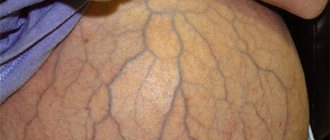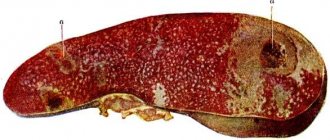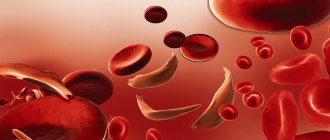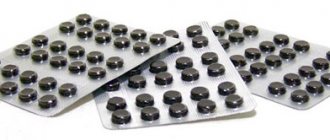Enlarged spleen
The spleen is the largest organ of the lymphatic system, which is located in the upper left part of the abdomen, just below the diaphragm, and is surrounded by a connective tissue capsule. In normal condition, the organ weighs up to 200 grams, has a length of about 12-13 cm, a width of 7-8 cm, and a thickness of 3 cm.
Anatomically, the spleen is divided into two parts: white and red pulp. While the white pulp performs a protective function, the red pulp filters the blood and destroys damaged cells. With mild splenomegaly, the spleen can increase to 500-800 grams in adults. If the weight of the organ increases to 1000 grams or more, this indicates massive splenomegaly.
Normally the spleen weighs 200 grams
Symptoms
The main symptoms of a pathologically enlarged spleen:
- For an infectious disease: fever, fatigue and swollen lymph nodes.
- For malignant neoplasms: weight loss, night sweats, fever.
- For diseases of the hematopoietic system: fatigue, weakness, pallor.
- If the liver is damaged: jaundice, bleeding from the esophagus, visible abdominal veins.
An enlarged spleen is a symptom, not an independent disease. However, it itself can also cause various symptoms: pain, a feeling of pressure in the abdomen or mechanical obstruction of the digestive organs.
Splenomegaly in infectious diseases often occurs along with fever, fatigue, and swollen lymph nodes. When splenomegaly occurs as a result of hematopoietic disorders, patients develop fatigue, mental disturbances, and pallor.
An enlarged spleen is mainly felt as pressure in the upper abdomen. Depending on the severity, splenomegaly may be felt under the left side of the chest. Pain may also occur where nerves or internal organs are compressed. Massive enlargement of the spleen can also increase the risk of rupture of the connective tissue capsule. In the worst case, organ rupture can lead to shortness of breath and cardiogenic shock.
In the International Classification of Diseases, 10th revision (ICD-10), an enlarged spleen is designated by code R16.1.
Possible complications
Among the possible complications, the most serious is splenic rupture. This can occur due to mechanical external influence on an enlarged organ.
If the spleen is enlarged, then you should avoid dangerous situations that are accompanied by blows to the stomach (not necessarily strong) or tension in the muscles of the abdominal wall.
When the spleen ruptures, internal bleeding develops, which is stopped surgically. Typically, if a rupture occurs, the entire organ is removed.
What diseases cause an enlarged spleen?
Why can the spleen become enlarged? Splenomegaly can be caused by blood disorders: sickle cell anemia, thalassemia, hereditary spherocytosis, or glucose-6-phosphate dehydrogenase deficiency. Malignant blood diseases can also increase the size of the organ. Often the spleen is enlarged due to leukemia, lymphoma or osteomyelofibrosis.
Tissue proliferation is also observed during infections. Epstein-Barr virus (infectious mononucleosis) is often accompanied by splenomegaly. Likewise, cytomegalovirus, especially in children and immunocompromised patients, causes severe swelling of the spleen. However, in adults, viral infection is usually asymptomatic and therefore largely unnoticeable. Splenomegaly can occur with:
- Leishmaniasis.
- Malaria.
- HIV.
- Viral hepatitis.
- Echinococcosis (parasitic disease).
- Tuberculosis.
The spleen is connected to the portal vein, which carries blood to the liver. If blood flow in the portal vein is impaired, blood will accumulate in the spleen, leading to swelling. Stagnation of venous blood can be caused by heart failure, cirrhosis of the liver, or portal vein thrombosis. Budd-Chiari syndrome is a rare liver disease that results in complete or incomplete closure of the hepatic veins. The pathological condition can also cause severe splenomegaly.
Malignant blood diseases contribute to an enlarged spleen
The reason why the spleen is enlarged may be autoimmune diseases that require separate treatment: chronic granulomatosis and Chediak-Higashi syndrome. Chronic granulomatosis is one of the rare hereditary diseases, which is characterized by inflammation-associated nodular tissue neoplasms - granulomas - in the internal organs and skin. Granulomas lead to early death of patients. Autoimmune lymphoproliferative syndrome can also manifest itself as an enlarged lymphoid organ.
An enlarged spleen may also be associated with glycogen storage diseases - Niemann-Pick disease and Gaucher disease. In diseases associated with glycogen storage, lipids accumulate in the spleen cells. In the case of Gaucher disease, the breakdown of glucocerebroside is impaired.
Malignancies that can cause splenomegaly:
- Leukemia.
- Lymphoma.
- Hodgkin's disease.
- Polycythemia vera.
Complications
Splenomegaly can cause gastrointestinal distress, fatigue, and general weakness. Serious consequences occur if treatment is started too late. In some cases, patients experience chronic pain, infection, and vision changes.
A typical complication of an enlarged spleen is hypersplenism, which can lead to a quantitative change in blood composition and minor subcutaneous bleeding. If anemia occurs, the patient will need regular blood transfusions.
Removing the spleen has a serious impact on the patient's health. Although regular vaccinations reduce the risk of contracting bacteria or viruses, the body is more susceptible to infectious diseases. Some patients suffer from serious infections that can be fatal. In addition, thrombosis may occur for several weeks after splenectomy. Even prescribed medications can cause side effects. Patients are advised to take anticoagulants strictly under the supervision of their physician to avoid side effects.
Etiology
An enlarged spleen in a child or adult can be caused by the following factors:
- bacterial or viral infection;
- protozoal infections;
- helminths;
- pathologies of other organs and systems in the body;
- idiopathic in nature.
Bacterial and viral infections that can trigger splenomegaly include the following:
- splenic tuberculosis is one of the most dangerous diseases, since due to the blurred clinical picture it is diagnosed already in the later stages;
- rubella;
- syphilis;
- mononucleosis;
- viral hepatitis;
- brucellosis.
Protozoal infections that can be regarded as causes of an enlarged spleen include the following:
Helminthiases, which are the etiology of an enlarged spleen, include the following:
It should be noted that the first type of disease is practically not found in the CIS countries, while the second is widespread throughout the world.
Common pathological processes that provoke an enlarged spleen include the following:
- cirrhosis of the liver;
- circulatory disorders;
- oncological processes;
- diseases of the genitourinary system and gastrointestinal tract;
- autoimmune pathologies (most often lupus erythematosus and rheumatoid arthritis).
In addition, this symptom can be provoked by systematically poor nutrition, with the abuse of fatty foods, and alcoholism.
Features in pregnant women
If your spleen is enlarged during pregnancy, it is recommended to consult your family doctor. During pregnancy, it is important to drink enough fluids and exercise regularly. Deterioration of spleen function in this case may be associated with deficiency of iron and vitamin B12.
The spleen in pregnant women may become enlarged due to a lack of iron and vitamin B12
Pregnant women with iron deficiency anemia may need to take iron supplements. The course of treatment depends on the severity of the patient’s condition, concomitant diseases and laboratory results.
Iron deficiency anemia can be dangerous for a growing person and requires immediate medical attention. The causes of anemia and the treatment regimen are determined by the doctor.
Which doctor should I contact?
If the pain persists and the spleen is enlarged, you should consult your family doctor. Symptoms such as diarrhea or fever may also indicate splenomegaly. Some patients also experience decreased appetite. If these symptoms occur, you should consult a physician. Further evaluation and treatment are highly dependent on the exact symptoms of splenomegaly.
Treatment of the spleen may be done by an infectious disease specialist, oncologist (cancer specialist), surgeon, or hematologist (blood disease specialist). A referral to a specialist will be issued by a therapist.
If your spleen is enlarged, you should always seek medical help. Making an early diagnosis helps prevent serious complications. If severe pain occurs in the left side of the upper abdomen, it is recommended to call an ambulance.
Classification of the disease
It is worth noting that any changes in the organ do not cause pain. However, its increase can cause discomfort, and pain is a consequence of compression of neighboring organs by the “grown” spleen. Enlarged spleen is divided into several types and degrees.
Splenomegaly occurs:
- primary (if the reason for the enlargement of the organ lies in diseases of the spleen itself). For example, for abscesses, hemangiomas, splenomas, and so on;
- secondary (splenomegaly is the result of pathologies in other organs).
The disease is also divided into degrees. It is from them that the doctor can find out how serious the disease is:
- 1st degree. The spleen stands out from under the arch of the ribs by 1 cm. Upon palpation, its lower belt is revealed;
- 2nd degree. The organ is located between the ribs and the navel;
- 3rd degree. The organ is palpated along the midline;
- 4th degree. The spleen can be identified in the pelvis or in the right area of the abdomen.
Diagnostics
First, the doctor takes a medical history and then performs a physical examination. An enlarged spleen may be detected during a physical examination under the left rib cage. Normally, the parenchymal organ is imperceptible. If the doctor palpates the spleen, this indicates splenomegaly. Suspicions are confirmed by ultrasound. An ultrasound may show evidence of liver damage or portal vein disease.
If the doctor has detected an enlarged spleen, additional examinations must be performed to help determine the root cause. Venous blood is taken from the patient's elbow and sent for testing to the laboratory. Analyzes help identify:
- The number of blood cells (red blood cells, white blood cells and platelets).
- Erythrocyte sedimentation rate.
- Signs of liver damage: transaminases (ALAT, ASAT), bilirubin.
- Immune parameters (C-reactive protein, antinuclear antibodies, rheumatoid factors).
- Signs of viral infections.
If the doctor reveals an enlarged spleen, additional examinations need to be performed.
According to the results of a blood test, certain diseases can be excluded as the cause of splenomegaly. Subsequently, additional diagnostic steps may be taken: a chest x-ray, a CT scan of the abdomen, or a bone marrow biopsy.
Clinical picture
Manifestations of the disease become intense due to the inability of the organ to adequately cleanse the blood. The spleen seizes blood cells to eliminate the developing infection. However, this process negatively affects the operation of the system.
The large mass of pathogenic cells absorbed by the organ significantly reduces the filtration capabilities of the tissues, which is why the spleen grows even more. As a result, the development of hypersplenism syndrome is possible, characterized by the non-stop absorption of blood cells by the spleen and, as a result, destruction of the body.
The number of formed elements in the blood (platelets, leukocytes and erythrocytes) sharply decreases. In this case, in addition to splenomegaly, anemia, frequent nosebleeds occur, women complain of abnormally long and extremely heavy periods. At the same time, various infectious diseases develop, including the common cold, but they are extremely difficult to treat. The smallest scratches take a long time to heal, and the blood clots extremely slowly.
At the same time, the spleen begins to absorb not only “waste” or pathological cells, but also healthy functioning elements necessary for the body.
Treatment
What to do if the spleen is enlarged? Treatment includes surgical removal of the spleen (splenectomy) or medication. Surgery is necessary if the splenic capsule ruptures or hypersplenism occurs. Splenectomy should be used as a last resort because it carries the risk of serious infectious diseases. Some patients may develop postsplenectomy syndrome.
7-12 days after removal of the spleen, the platelet count temporarily increases (up to 1 ml/µl). Since the organ itself is involved in the breakdown of blood clots, the risk of thrombosis increases after its removal. Within a few weeks, the platelet count decreases again.
There is an increased risk of thrombosis in the first weeks after spleen removal. Antithrombotic agents should be used until the platelet count drops below 500,000 per μL. During this time, you should avoid long periods of sitting and excessive exercise, which increase the risk of bleeding. There is a great danger of developing thromboembolism of various organs.
After removal of the spleen, the overall susceptibility to infection increases. Microorganisms can cause severe pneumonia. Infection can also be prevented by continuous injections of penicillin solutions every 4 weeks.
It takes a long time for the immune system to adapt after splenectomy. Patients must undergo routine immunization against influenza, pneumococcal, Haemophilus influenzae and meningococcal infections. The patient must do everything possible to prevent pathology. Some patients may die from serious infection within a few years.
The spleen is not a vital organ and therefore can be completely removed. An alternative to splenectomy is radiotherapy, which shrinks the spleen. However, the success of radiation usually lasts only a few months, after which the organ returns to its original size. Repeated radiotherapy is often required.
Medicines
How can you shrink your spleen with medication? In the early stages of tumor growths, patients receive special medications. These include:
- Hydroxycarbamide (hydroxyurea): a cytostatic agent - a substance that inhibits cell growth.
- Interferon alpha: a protein that stimulates the human immune system.
- Janus kinase inhibitors (UC inhibitors): inhibit the activity of certain enzymes that control cell growth.
The choice of drugs depends on the cause and stage of the pathology
At the beginning of treatment, the doctor must determine the dose of drugs for a malignantly enlarged spleen. This depends mainly on how high the platelet concentration is in the patient's blood. The selected starting dose should not be changed during the first 4 weeks of treatment. After this, the doctor may adjust the dose at two-week intervals.
In addition to thrombocytopenia and anemia, JAK inhibitor therapy can also lead to neutropenia. In this case, the concentration of neutrophil granulocytes in the blood decreases in patients. The result can be a weakening of the body's immune system. If the number of neutrophils decreases to less than 500 per 1 μl of blood, therapy should be temporarily discontinued.
Diet food
Diet is considered an important point on the path to recovery. You need to adhere to it after surgery and during drug therapy.
The main principle of the diet is the exclusion of harmful foods:
- fat;
- roast;
- salted, pickled;
- carbonated drinks, coffee, strong teas;
- alcoholic drinks;
- fast foods and semi-finished products.
Recommended to eat:
- soups based on vegetable broths;
- lean meat;
- vegetables fruits;
- porridge;
- lean fish.
You should drink water, just plain clean water, preferably not tap water, in large quantities - up to 2-2.5 liters per day, this will help the body recover faster and remove pathogenic microorganisms from it.
It is recommended to switch to fractional meals: there should be at least four meals a day, it is desirable that the portions are small and do not burden the body.
Without dietary nutrition, it will not be possible to achieve positive results, especially after surgery. Therefore, it is worth excluding from the diet all foods that are harmful to the body and are difficult to digest.
Prognosis and prevention
The course of the disease and prognosis of splenomegaly greatly depend on the underlying disease. Without treating the cause, the spleen can rupture. Depending on the severity of the tear, surgery may be required. If bleeding cannot be stopped, the spleen must be completely removed immediately.
An important part of preventative therapy is regular visits to the doctor and routine examinations. The doctor uses the same procedures as when diagnosing the disease, both laboratory tests and imaging tests. If other diseases are suspected, additional examinations may be required.
Using microscopic blood tests, your doctor can check whether the number and shape of blood cells change over time. The results of the blood test can be used to draw conclusions about the progress of the disease and the success of treatment. If necessary, therapy can be changed.
The time intervals at which blood tests are performed depend on the form and individual course of the disease. At the beginning of therapy, it is recommended to conduct monthly laboratory tests. Once the disease has reached a stable phase, examinations are usually necessary quarterly or semi-annually.
If there are fluctuations in the levels of various cells in the blood test, this is not a cause for concern. Such differences are often not a sign of recurrence of an enlarged spleen or other disorders.
ethnoscience
In certain cases, it is not prohibited to use traditional medicine methods to treat an illness.
Traditional medicine has long shown itself to be beneficial in the treatment of many diseases. But every coin has two sides, which are important to remember when choosing this method of treatment. The main risk is the presence of a possible allergy to the components of decoctions and infusions.
- Propolis is a widely known remedy that has a beneficial effect on the human body in various diseases. In the case of an enlarged spleen, you should take an alcohol solution of propolis: 25-30 drops diluted in a quarter glass of water. The course of inflammation therapy is 20 days.
- Ordinary tea with the addition of lemon and ginger root improves immunity and affects platelets. The drink not only gives you energy, but also strengthens the body’s defenses against external factors that provoke illness.
- A decoction of St. John's wort has a beneficial antimicrobial effect. It’s easy to prepare an infusion: just add a small spoonful of dry St. John’s wort to a glass of boiling water and let it brew for half an hour. This infusion can be stored for no more than two days. You should take 1/3 cup three times a day.
- A drink made from chicory has beneficial properties and is pleasant to the taste. You can drink it instead of coffee three times a day, adding 2 tablespoons of dry chicory per glass of hot water.
- Wormwood decoction is useful for diseases of the spleen. It has a bitter taste, so it is advisable to add honey to it. To prepare the decoction, you need to take 100 grams of dry wormwood herb, leave it in water for a day, then heat it over low heat for half an hour, add honey. In case of allergies to honey and bee products, it is permissible to add sugar instead.
- Raisins, tasty and healthy, are used in the treatment of spleen tumors. Rinse 50 grams of dried fruit well, add 250 ml of grape vinegar and leave to infuse overnight. On an empty stomach in the morning, eat berries and drink 10-30 ml of vinegar. If you use this method regularly, tumors in the spleen will resolve and internal bleeding will stop.











